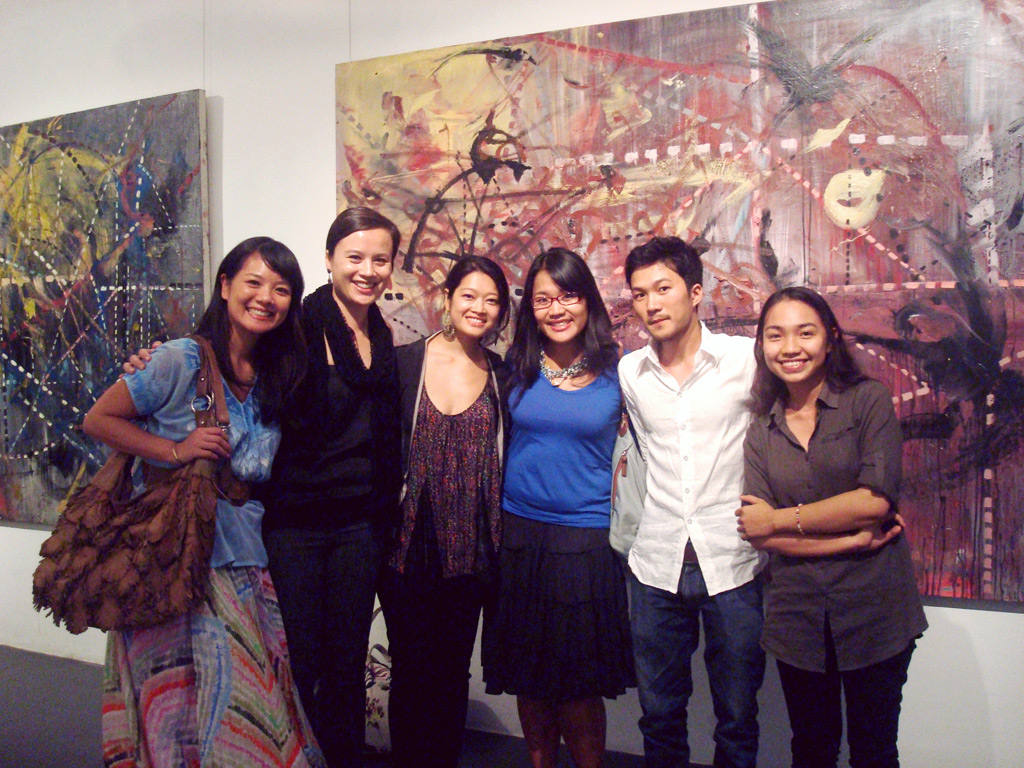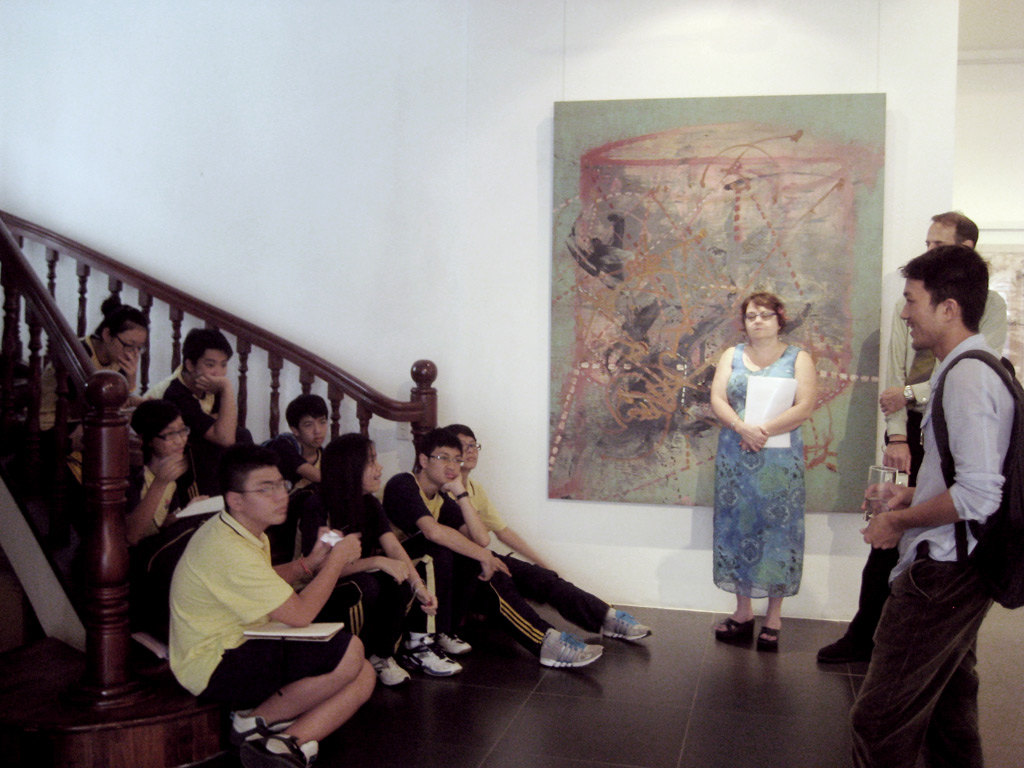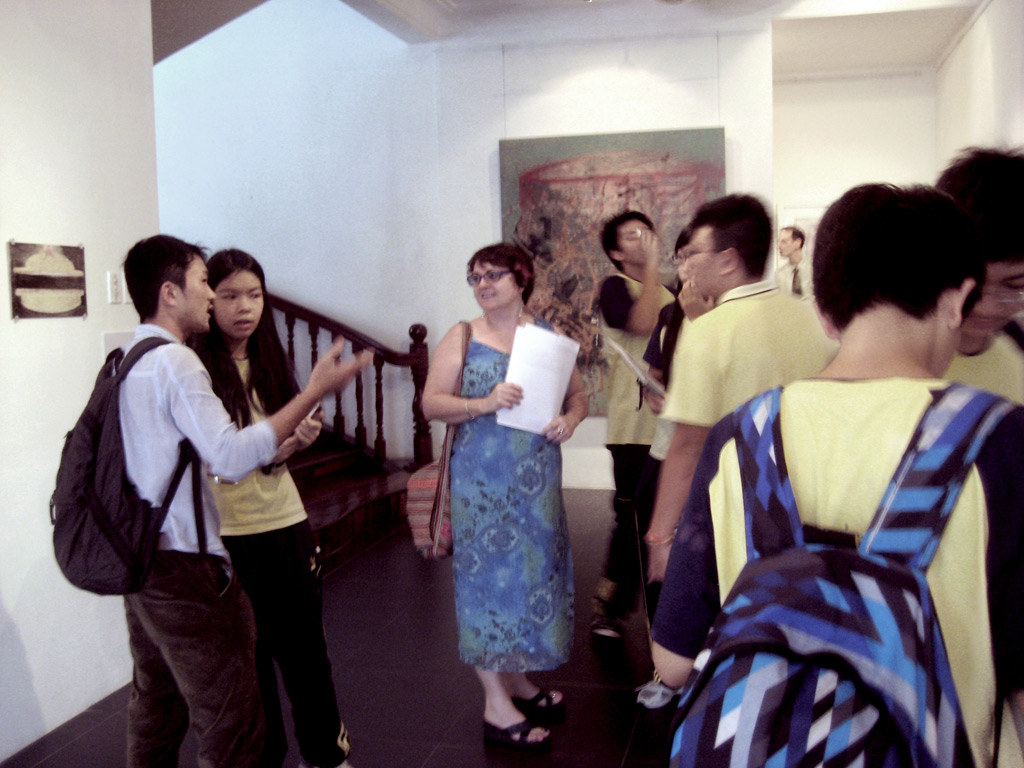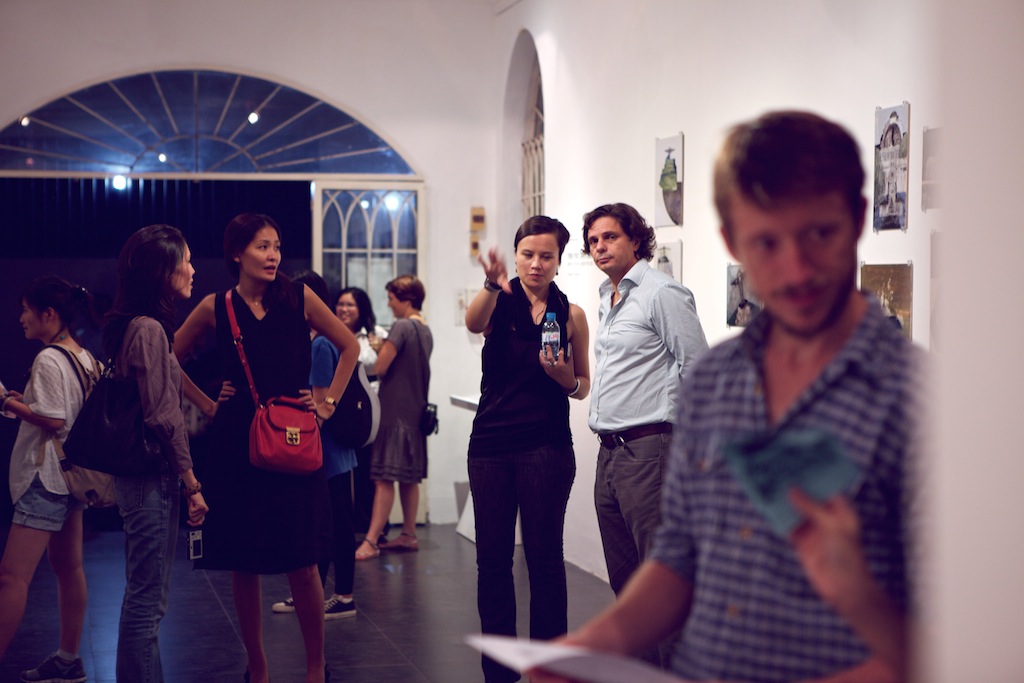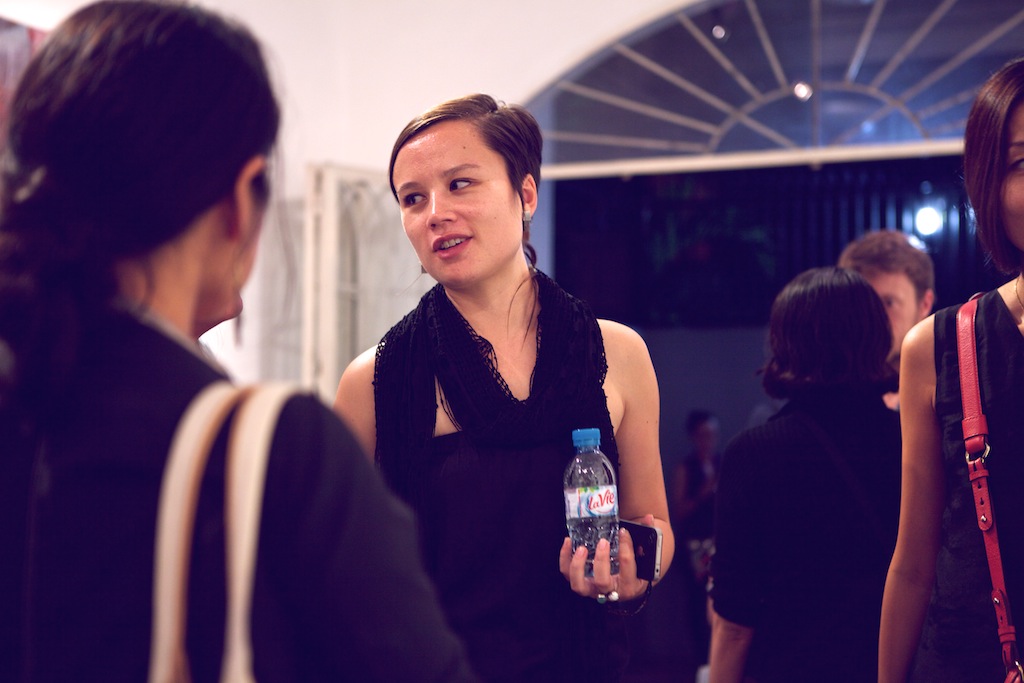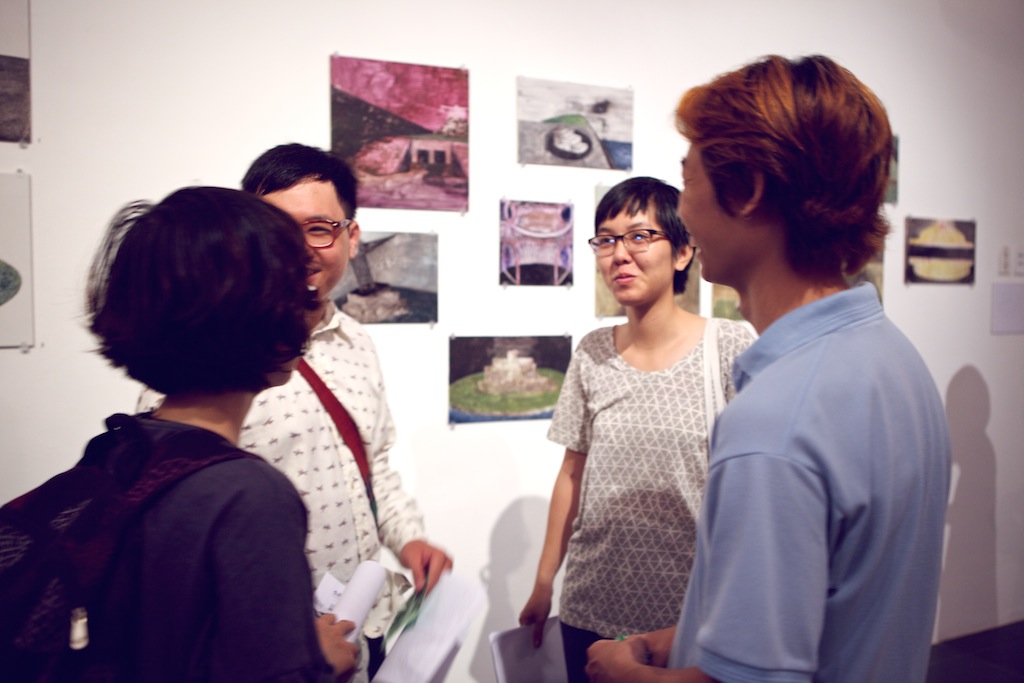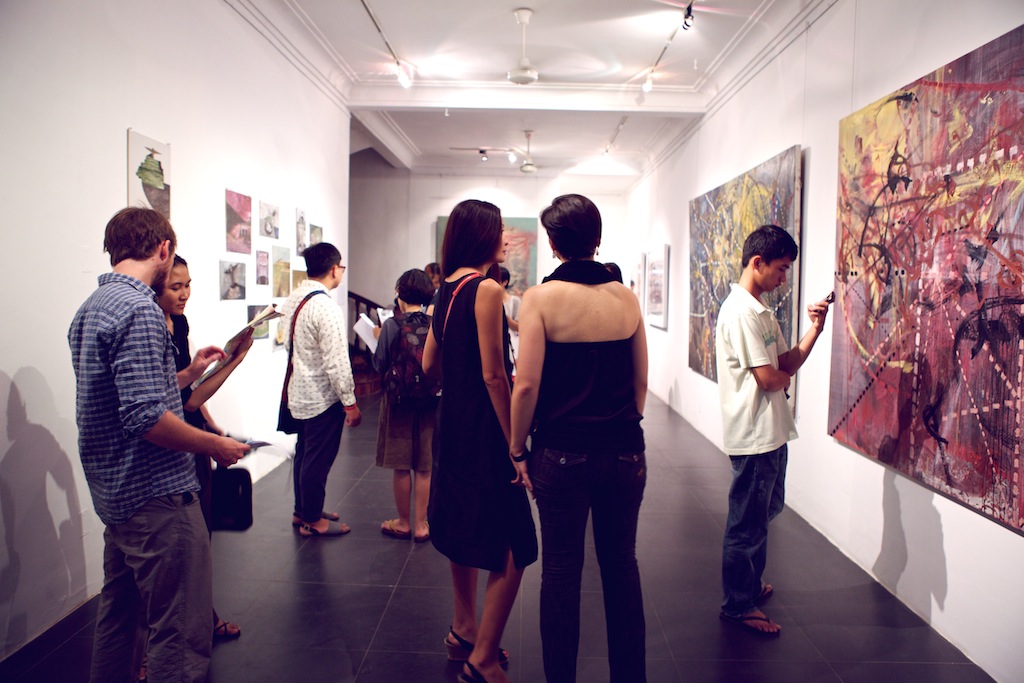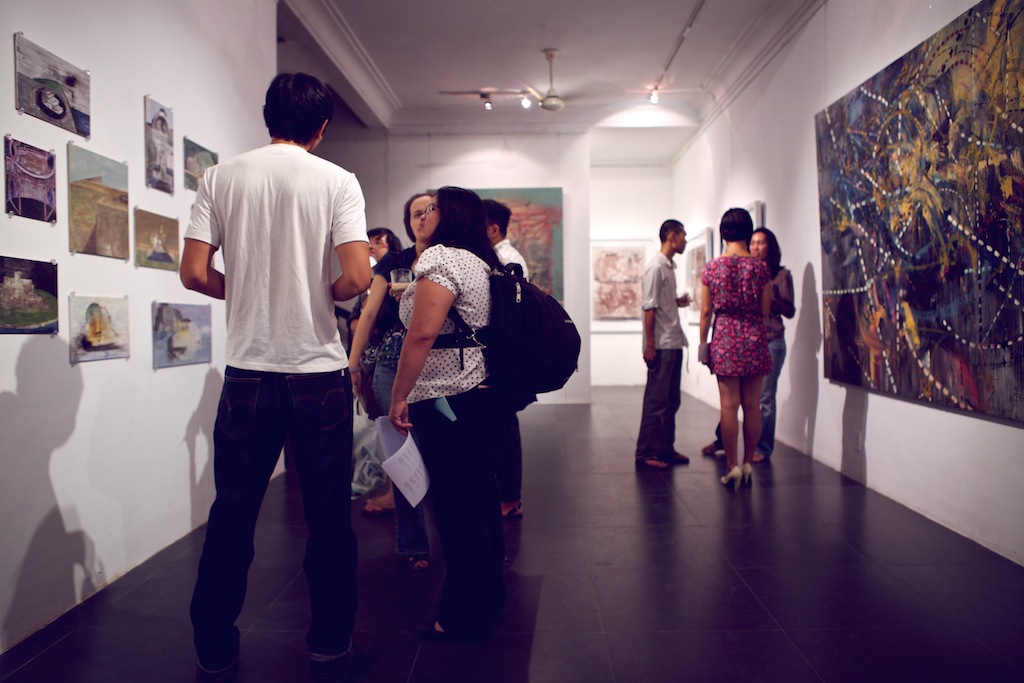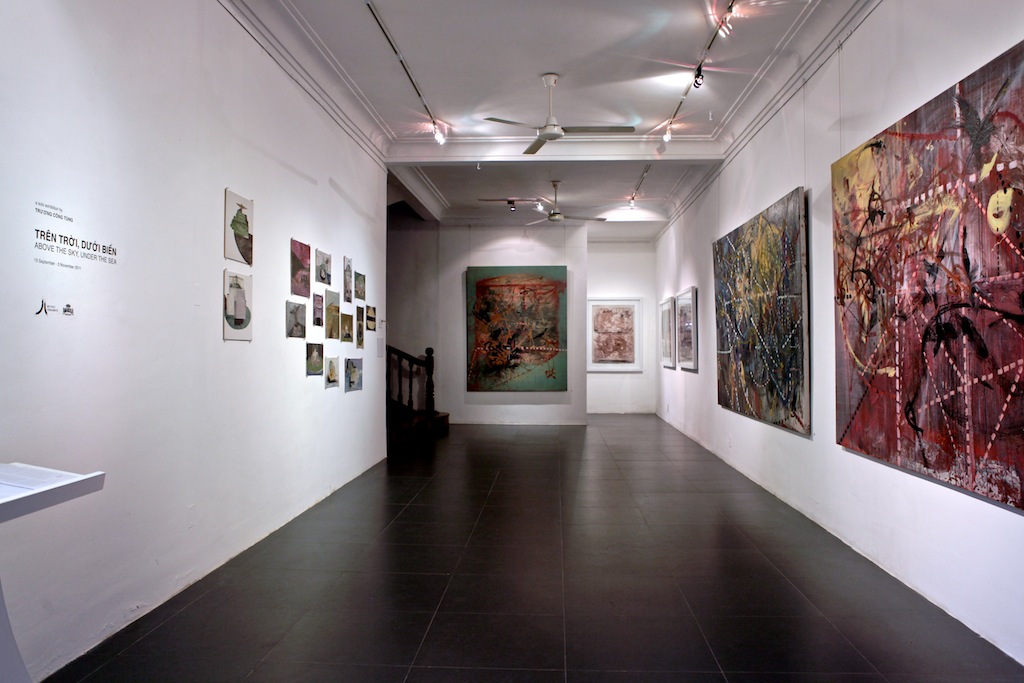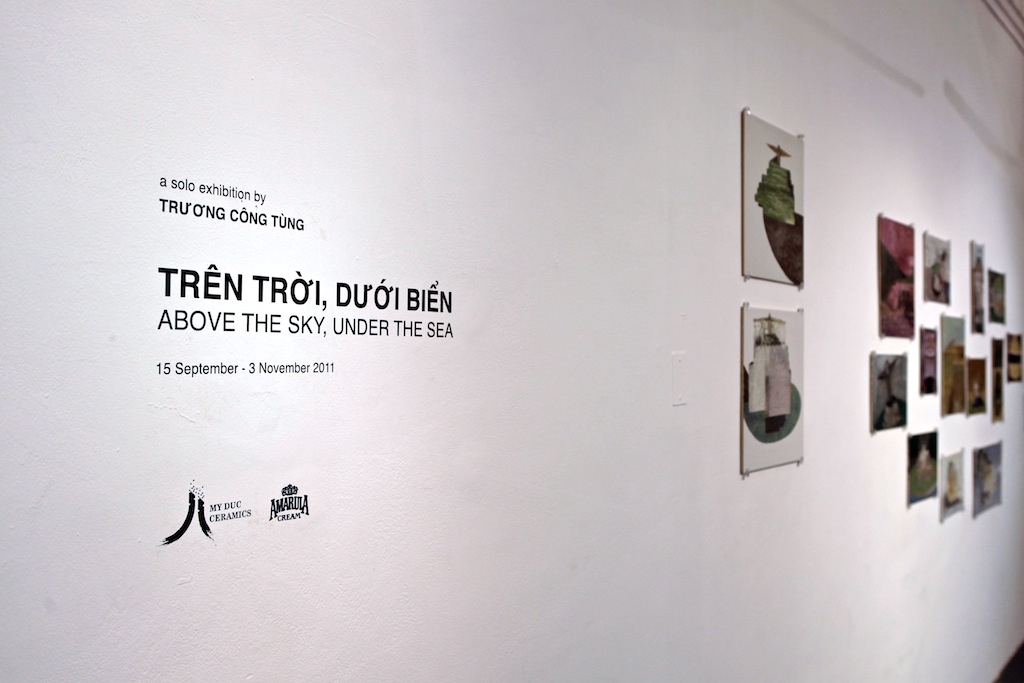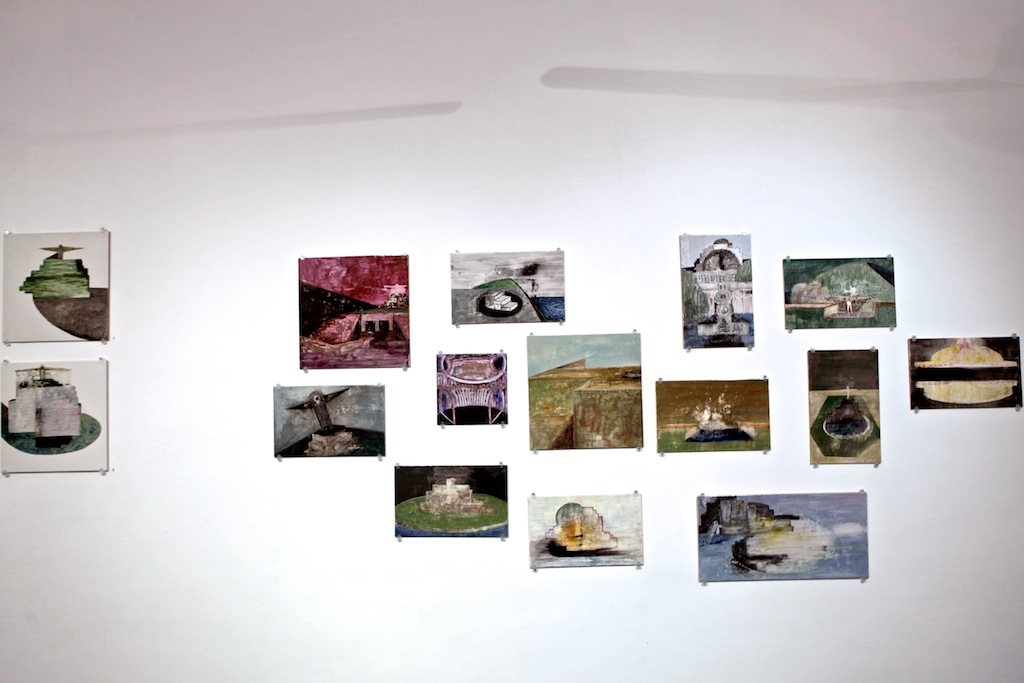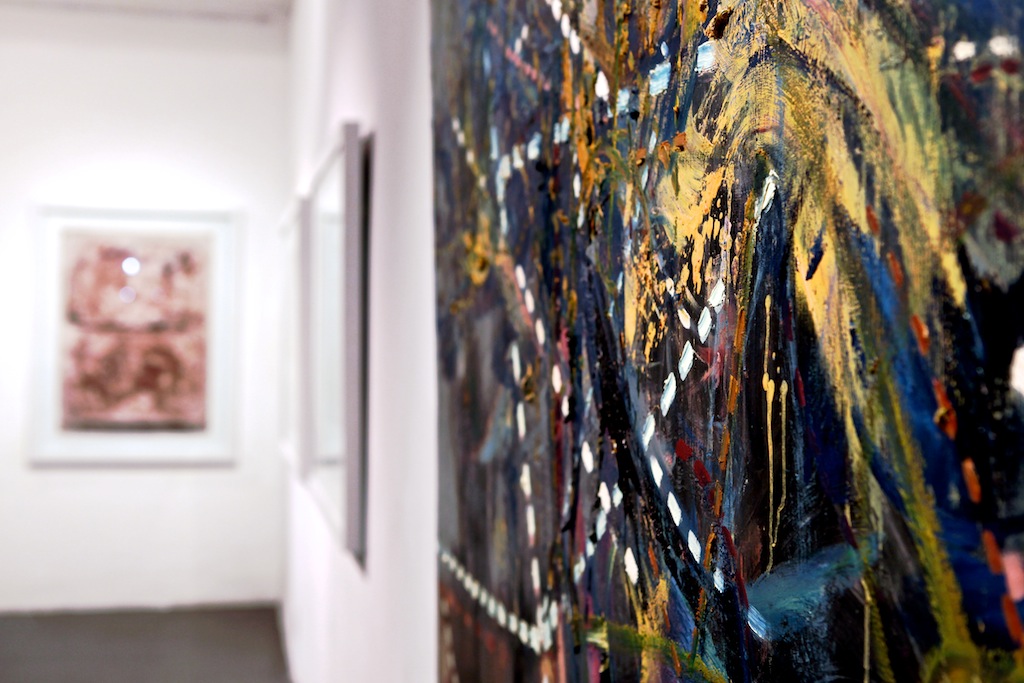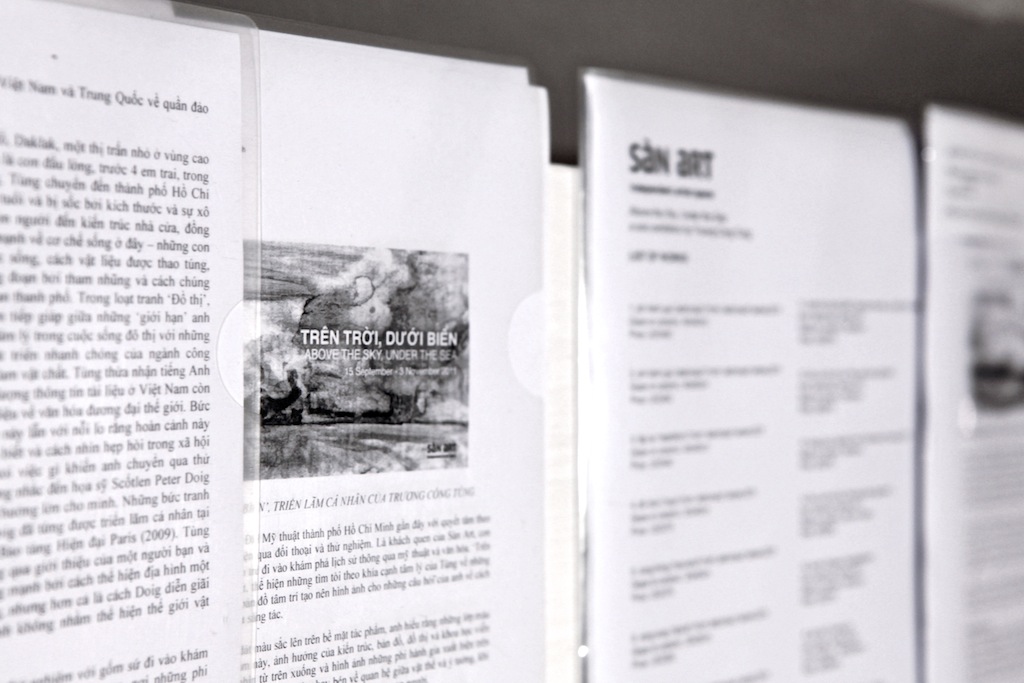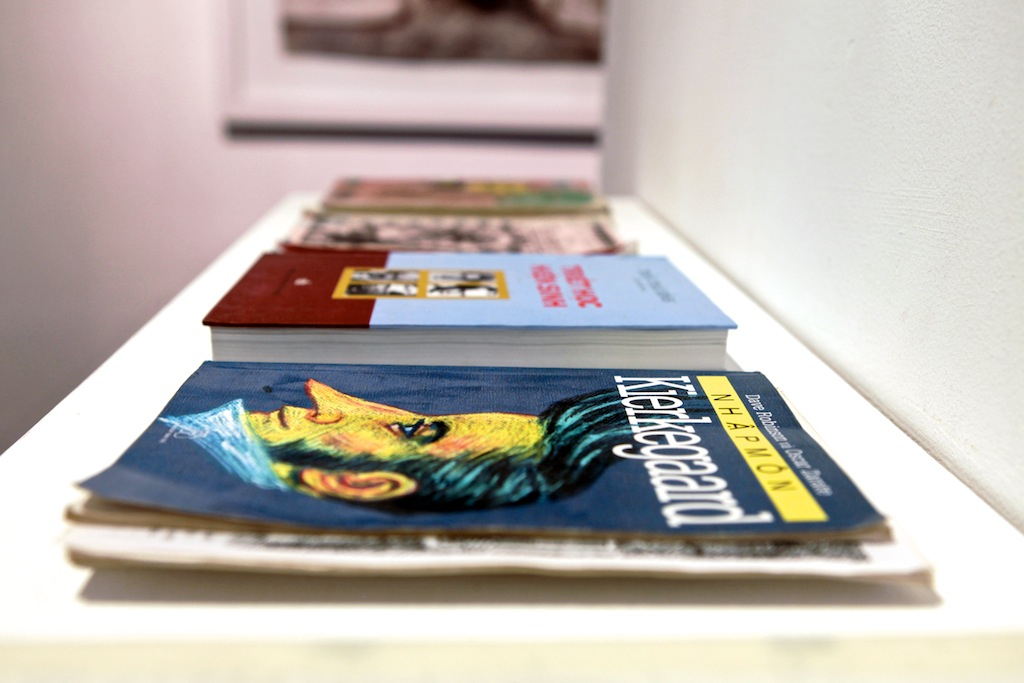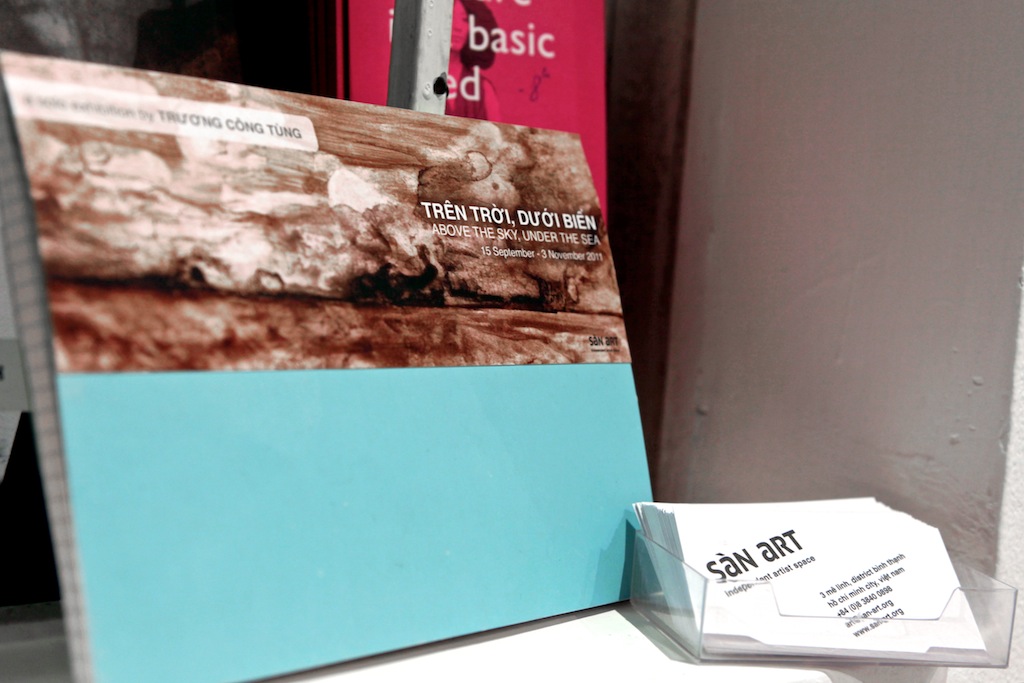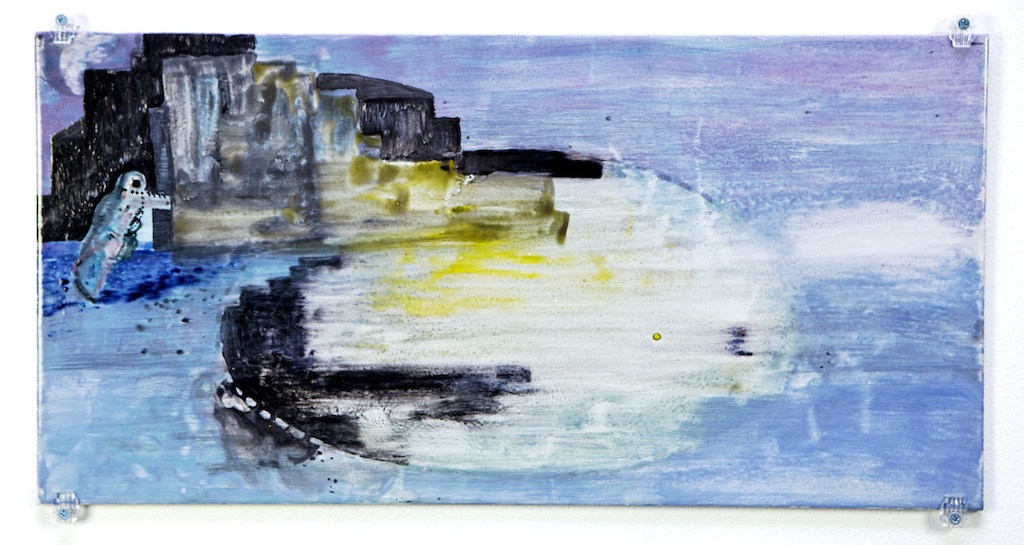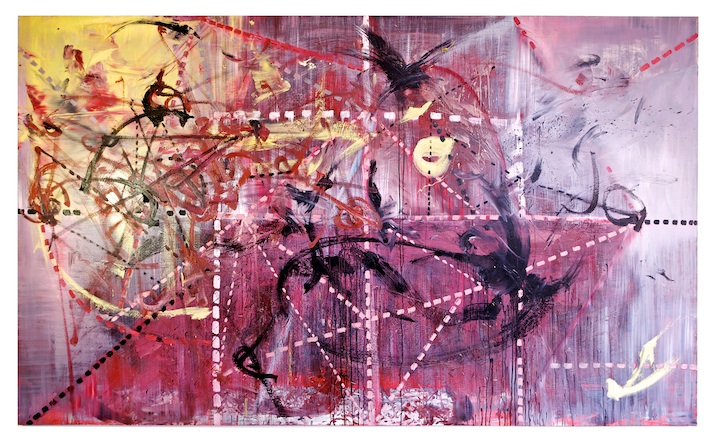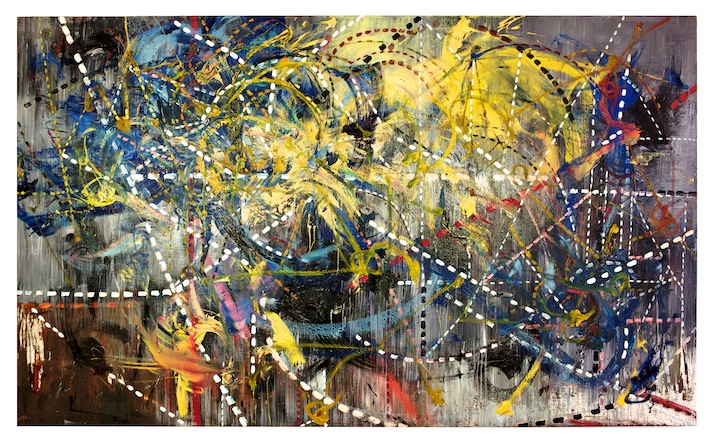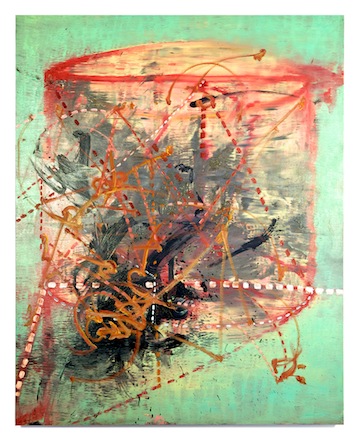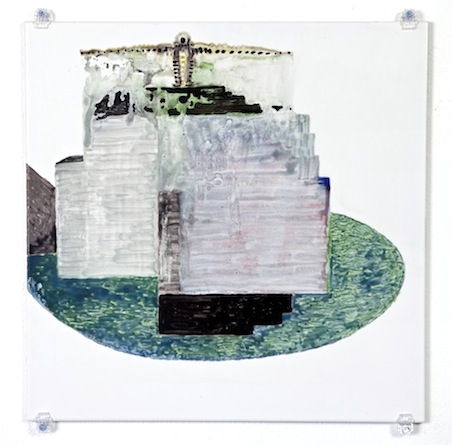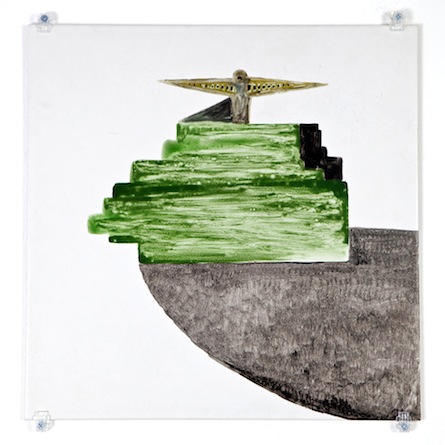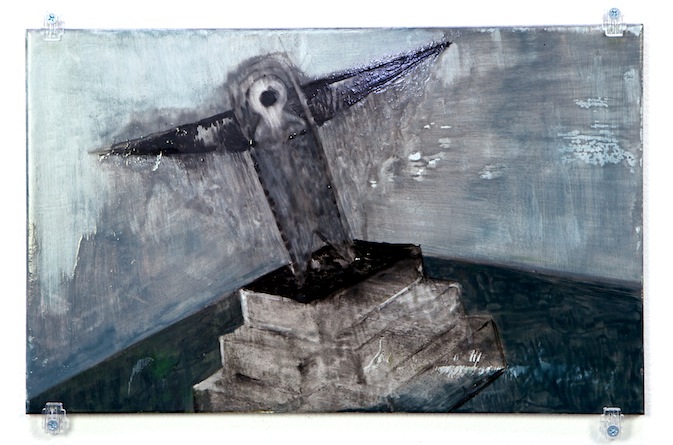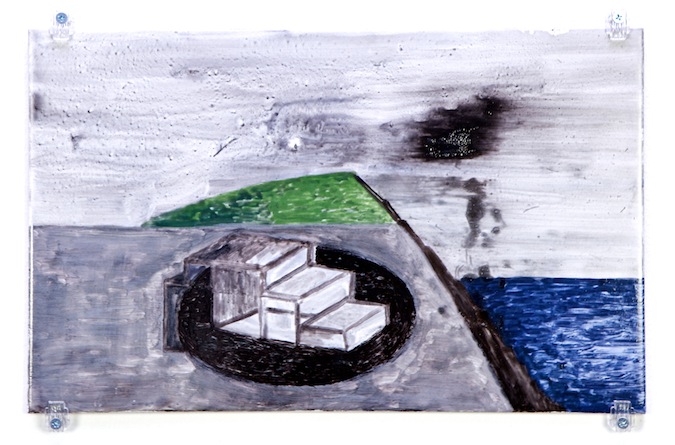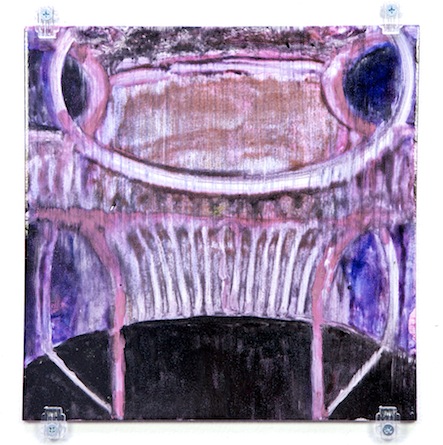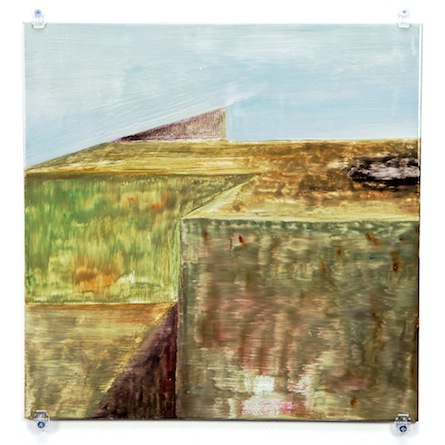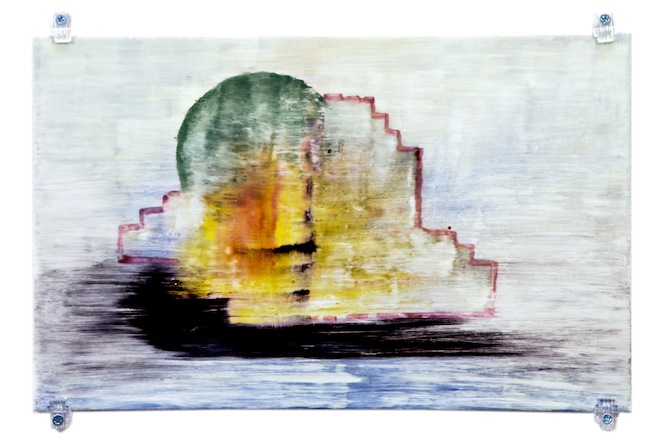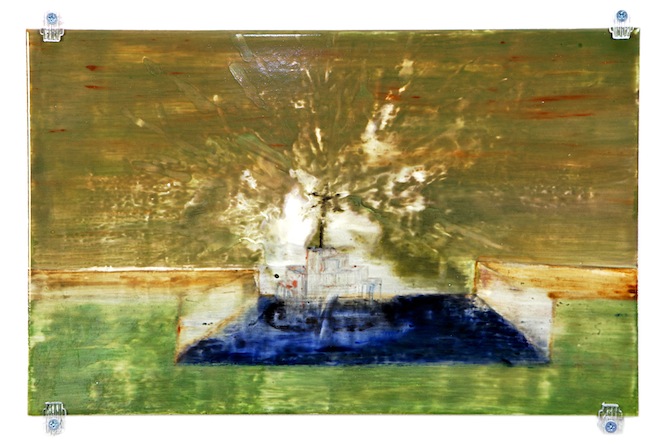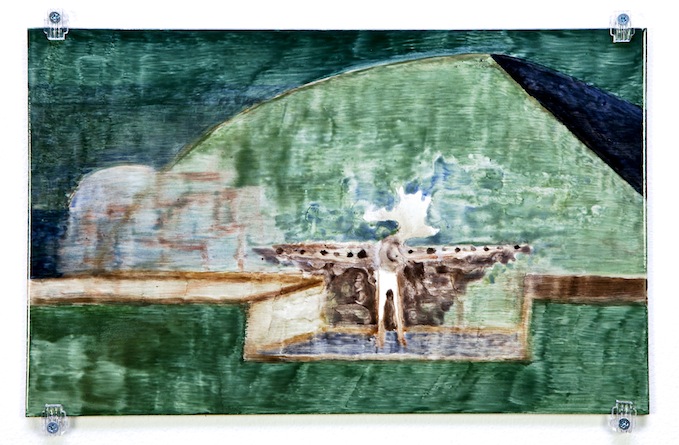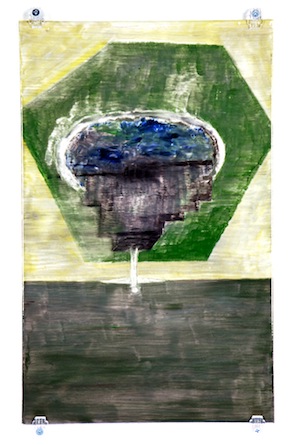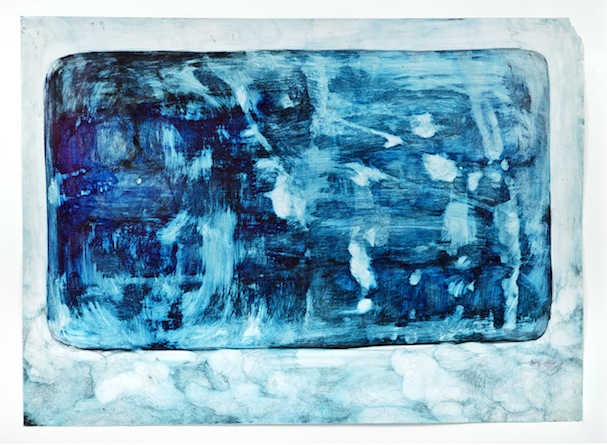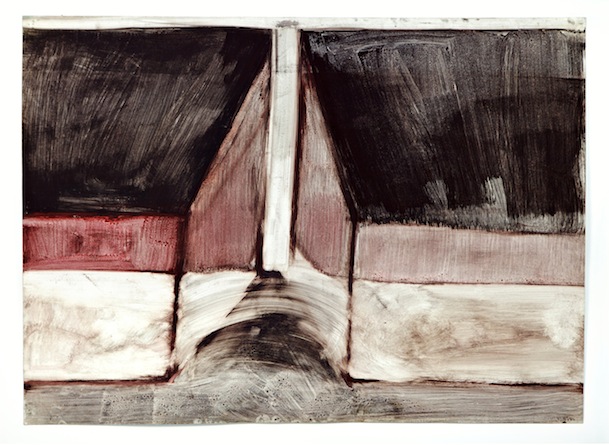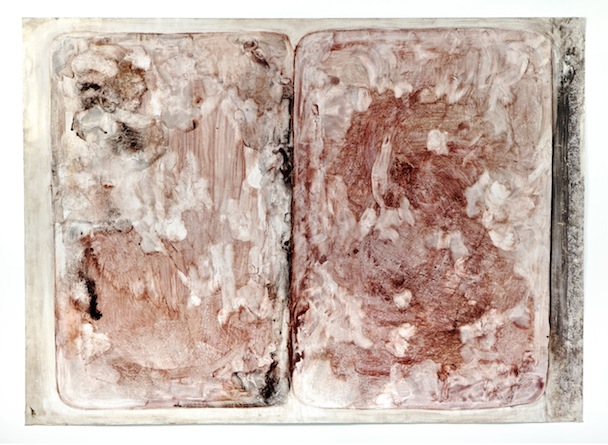Opening: 15.09.2011 @6pm
Exhibition on view until 03.11.2011
Location: Sàn Art
3 Me Linh Street
Binh Thanh District
Ho Chi Minh City
Truong Cong Tung is a quiet and industrious thinker who is artistically compelled by the physical and psychological experience of space. This space is a mental state of mind while also a physical environment. Concerned with ‘space’ as a terrain governed by human ambition, be it dictated by government, family or an individual’s ego, this exhibition takes us on a journey that illustrates his deciphering of this duality. Trained in the traditional technique of Vietnamese lacquer painting, Tung has acquired a deft skill in pushing color across a surface until it appears near translucent. His art, whether on paper, canvas or ceramic, possesses a tension where both line and color dance to different metaphors.
In the series ‘Brothers of Flesh and Blood’ 2009 the gouache is like a fluid contained within particular shapes. It is as if the gouache has been impregnated with a white toxin, akin to an over abundance of white blood cells in the human body. Here the white ‘cells’ invade the space, like a kind of allergic reaction. In ‘Instantly Out, Instantly In’ 2009, a house has been split in two and between the tearing of this structure the frenzied brushstrokes suggest an invisible intruder. In these three works there is a sense of being caught within, of being limited to a certain space that is increasingly being marauded. Tung alludes to his interest in the writings of Soren Kierkegaard, a mid 19th Century Danish philosopher who is widely believed to be the first existentialist thinker. ‘Existentialism’ is known as the study of the human condition, of an individual’s emotions and actions, responsibilities and thoughts in relation to the meaning of life. Existentialism focuses on the subjective human qualities, such as freedom, guilt or regret, as opposed to the study of science or language. When asked what drew him to Kierkegaard’s writings, Tung states ‘The central topic in Kierkegaard’s study is ‘Existence’. As a human being, what does it mean to exist? He is obsessed with our relativity to time and that we do not last, it makes our sense of existence more intense and pressing. We can go through life and avoid thinking about those issues, we can still live simply by copying what other people do, but in that way, we do not exist as an individual. To really exist we have to face the basic truth of ‘the human condition’ and decide what our responsibilities are.’*
For Tung, his art is a way of exploring the boundaries that exist around and within him. Tung’s next exploration after working on paper jumped in scale and medium, where his inner questions became a kind of painted map on canvas in oil. In these explosions of color, haphazard broken lines of paint appear, reminiscent of the language of maps, particularly the yellow stripes of highways. If perceived as aerial views of a landscape, these broken lines that weave in and over layers of oil paint could represent the division of the Vietnamese countryside and the slow encroachment of urban life. Titled ‘Graph’ 2010, this series of paintings also refer to the political shifts that cause borders between countries to change or be contested. Here he particularly refers to the ongoing territory dispute between Vietnam and China over ownership of the Spratly Islands.
Tung grew up in Buon Ho, Daklak, a small town in the central highlands of Vietnam where he was born to a farmer’s household as the eldest of five. At eighteen, he moved to Ho Chi Minh City alone and was struck by the city’s size and chaos, of its people and architecture, but also in awe of its machinery – the people who struggled, the materials that were manipulated, the systems that were corrupted and the impact this made on the landscape. In his series of ‘Graph’ paintings, Tung attempts to find a meeting point for the ‘limit’ he feels psychologically in the experience of the city with the burgeoning menace of industry and material greed. Tung admits he has limited English skills and that access to knowledge resources in Vietnam, such as books on contemporary international culture, are few. His frustration with these restrictions is also laced with anxiety in how this context breeds ignorance and narrow-mindedness in Vietnamese society. When asked what was of key influence in his decision to experiment with oil he refers to the work of Scottish painter Peter Doig as influence, whose abstract paintings have been given recent solo exhibition at Tate Britain (2008) and the Paris Museum of Modern Art (2009). Tung came upon Doig’s work through a friend and was immediately taken with his abstract treatment of the physical landscape, but more significantly Doig’s admission that his work is not meant to be a depiction of a literal world.
Perhaps following on from this, Tung’s experimentation with ceramic explores the lofty realm of the human imagination, where astronauts stand atop tiered stages that eject out of floating landscapes. In this series entitled ‘Astronaut’ 2011, these anonymous places appear blurry and unrefined, like the mirage of a dream upon waking. Tung comments ‘I’m interested in drawing the same symbols over and over in different ways. Repeating the same subject matter is like getting a second chance. Repetition also touches on the fact that often we’re unsure about what we had chosen. The staircase in these works comes from the idea of an award platform in a fight or a game, where the winner is glorified. It becomes a symbol of conquest, power and the division of class in the global game. The person on the platform is spreading their wings as an adaptation of Jesus’ hands, but also like a robot, as if we are watching the becoming of a new species with wings.’ Ceramic is also a fragile medium that breaks with force but durable against time. It is perhaps fitting that his investigation of the internal and external world in this exhibition should finish with ceramic whose properties could be argued as analogous to the human spirit. Truong Cong Tung is a graduate of the Ho Chi Minh City Fine Arts University. ‘Above the Sky, Under the Sea’ is his second solo exhibition to date.
Zoe Butt
(Email interview between Zoe Butt and Truong Cong Tung, August, 2011)


